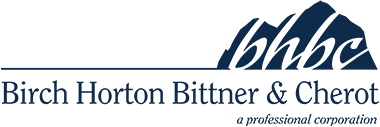Written by Adam W. Cook
When I was in college, I spent my summers working with construction crews back home in Alaska. In addition to giving me exposure to the industry, I learned about the importance of workplace safety. During my first day on the job on a project, I got a stern talking-to for coming to work without steel-toed boots. Every project manager and superintendent I worked under was determined to maintain an accident-free jobsite—and for good reason. Injuries can mean delays in work, loss of crew morale, and legal headaches.
Sometimes efforts to keep a project free of injuries can have unintended results. I worked for one supervisor who decided to hold a pizza party every Friday if the crew finished the week without an accident or injury. At one point, a co-worker had his thumb crushed while moving boxes. The other members of the crew urged him not to report the injury or seek first aid, because they wanted to get their free pizza. The poor guy went home nursing an injury that he felt he could not tell anyone about.
The temptation to simply keep quiet about even serious injuries can be strong, but managers must not succumb to it. Alaska law requires that an employer report any in-patient hospitalization resulting from a workplace injury to the Alaska Occupational Safety and Health section of the Department of Labor (“AKOSH”). The employer has eight hours to make the call to the AKOSH toll-free number. Even if the injury is not the result of some failure to follow safety measures, and even if the result is just a few hours in the emergency room, employers have to make the call.
AKOSH is essentially the enforcement arm of the federal Occupational Safety and Health Administration. AKOSH will send an investigator out to the jobsite immediately following an injury. The investigator will interview individuals who witnessed the accident, including the injured person. He or she will also take photographs, ask for a copy of the employer’s safety plan, and look around for any OSHA regulation violations, even if they are unrelated to the injury. The inspector will also be looking for remediation of the conditions that caused the injury. The employer’s attorney may be present for this inspection.
AKOSH inspections do not happen only following an injury. Any employee can individually call the department and report a safety problem, prompting an inspection. AKOSH will conduct the inspection “as soon as practicable.” Alaska law provides stiff penalties for employers who respond with retribution against whistleblowers.
After an injury and an inspection, employers are anxious to know what comes next. AKOSH can wait up to 180 days to decide whether or not to issue a citation. If a citation is issued, the proposed penalty will usually be a monetary fine. However, a fine is not the heaviest burden on the employer. Citations generally describe each of the employer’s violations as “serious” or “other than serious.” The first category of violations can do serious reputational damage to a contractor. Not only is the existence of a serious violation public record on the AKOSH website, it is also something a contractor may have to report to project owners or general contractors when bidding for a job. It is a black mark that could prevent a contractor from getting work.
Why does Alaska and federal law levy such heavy penalties following accidents? Because injuries, especially in construction, are a serious concern. In 2017 Alaska led the country in per-capita workplace deaths, with the construction industry experiencing 9.5 deaths per 100,000 people employed in the industry. Nonfatal injuries are much more common. In 2017, there were 2.4 nonfatal reported injuries for every 100 people employed in construction. The number of unreported injuries was doubtless very high as well.
Finally, employers should know that not every injury automatically means a citation. Sometimes, the best safety practices in the world cannot prevent injury. If an injury is caused by equipment failure due to an equipment manufacturing defect, that is not necessarily an OSHA violation. If an employee is under the influence of drugs or alcohol and gets injured as a result, the employer may not be liable for the employee’s misconduct, provided the employer had no way of knowing or preventing what the employee did. These are some of the defenses an employer can present when fighting back against an unjustified citation. After all, AKOSH can make mistakes too. Strong legal representation can keep employers from being burdened by an incident that was simply not their fault.
